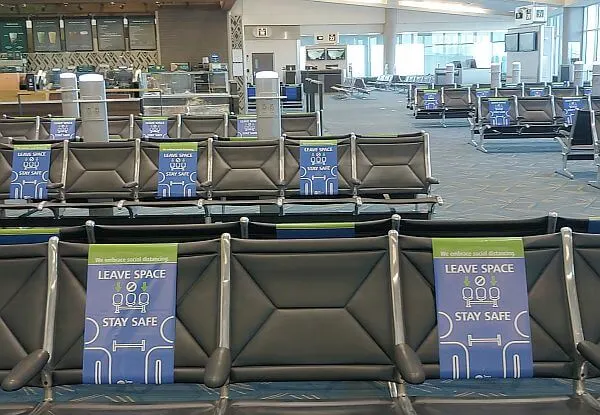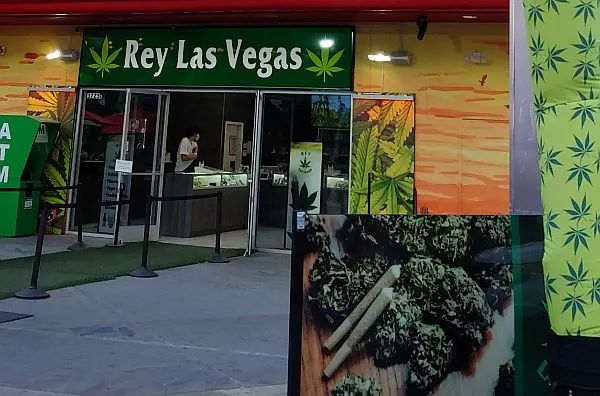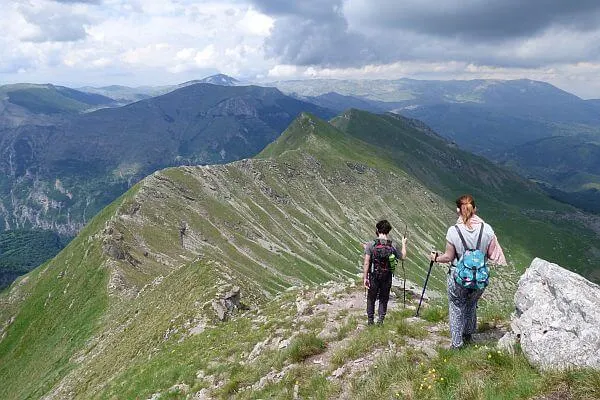Ever since I started this budget travel blog back in 2003, I’ve written regularly about safe travels and the perception of travel risks. Even though people—especially Americans—generally face more deadly risks at home than they do abroad, people who don’t travel much think it’s a big scary world out there and they have to be extra careful on vacation

As evolved as we humans have become, we still let our hard-wired instincts take over when deciding what’s risky or scary. The 24-hour news channels and local TV networks are happy to play along, feeding your fear to keep you tuning in.
Nowhere is this more true than with foreign travel, where the perception of risk based on some long-ago incident trumps any logic or common sense when it comes to assessing risk based on real statistics and facts. Our nightly news is all blood, robberies, and mayhem, yet we worry about going to a foreign country because we heard about a minivan full of tourists getting robbed on a mountain road five years ago.
Let’s Start With Safety in Mexico
I’m currently writing this from Mazatlan, Mexico, on my fourth visit to the city. The expats who live here keep telling me how safe they feel here, much safer than they felt in the USA. They feel this way even though this is the state of Sinaloa, former base of jailed El Chapo and star state of the first few episodes of Narcos Mexico.

I live in the state of Guanajuato and have had a crime-free blissful life since first arriving in 2010 with my family, even though that state is in the news all the time for cartel-on-cartel violence. The thing is, gang violence is not the same as violence against tourists, or against foreigners. That’s not the case in Chicago or Detroit and it’s not the case in Mexico either.
As best as I can tell from the U.S. State Department statistics, there were only 51 homicides in Mexico involving U.S. citizens in 2022, the most recent year available, down from around 75 the year before. Those include ones marked as “drug related,” so the victims were probably not innocent bystanders. It’s important to note that those numbers are exceeded by drownings, suicides, and auto-related accidents.
That’s 51 deaths in the entire country of Mexico over a 12-month period! In a country that gets 28 to 40 million visitors a year!
You probably have more murders in your own city if it’s one of the 25 largest and you’re American. And the deaths were likely far more random, like shootings in a shopping mall or movie theater. Those incidents don’t happen in Mexico because there’s no gun maker lobby that has paid-off politicians in their pocket. There’s only one gun store in the whole country. Around 70% of all the guns that exist in Mexico come from Texas, where the laws are super lax.
Yet what are the most-searched phrases in Google each month? “Is Mexico safe” “Is it safe to visit Cancun” “Is Mexico City safe” and “safest place Mexico.”
Emotions Beat Out Logic in Most Humans When it Comes to Safety
I’ve looked at a variety of academic studies since I first started writing about this subject and it’s clear that this problem of evaluating risk is widespread in our culture, across risk factors. We systematically overestimate the likelihood of rare events, such as plane crashes or terrorist acts, while paying no mind to routine hazards such as car crashes, bathtub head whacks, or ATV accidents. (Never mind heart disease from smoking and being obese.)
One particularly noticeable trend across the world is how much risk people assign to air travel, even though it’s one of the safest ways you can get from A to B. There was exactly one fatal commercial air crash in 2023, a prop plane traveling between Kathmandu and Pokhara. One crash! That’s out of millions of flights that went up into the air and landed safely at the other end. Yet there will be one incident that gets into every single media outlet and everyone thinks that flying is unsafe.

It’s not. We’d have to have 1,000 times more incidents than we have now to make flying even close to being as dangerous as driving your car to Walgreens.
When there’s an incident within a country that makes the international news, the country sees an immediate drop in visitors, no matter the geography. Back 20 years ago I wrote about a global survey that came out measuring what people think is a risk and what is really a risk. Statistically these are two very different things and our brain gives much higher weight to emotions than facts.
Here’s my favorite quote from then, keeping in mind Al Qaeda was still active and this was just a few years after the 9/11 attacks in the USA: “Terrorism was cited among the top five greatest threats by more than 60% of respondents in each region, while obesity made the top five among just 6% of the sample. And this despite the fact that in the U.S. alone, some 300,000 people will die this year as a result of obesity.”
Driving barely showed a blip in the survey, even though highway accidents kill 100 times more people each year in the US than all the terrorism events around the world added together, even if it’s a terrible year for attacks.
When I wrote that there had just been a bombing in usually calm Morocco. But it was in Casablanca, where few tourists go anyway, and one of the targets was the Belgian embassy, of all places. So it turns out that the tourists seeing the sites in Marrakesh and Fez were not any more unsafe than those of us eating four doughnuts a day or exceeding the speed limit on the local highway.
Nevertheless, tourist visits to Morocco predictably dropped by half for a while. The media talked about it for a few weeks and the fear of the unknown made people cancel their trip.
But I’ve been seeing this happen for decades now and I know what it means for the intrepid. Bargain flights, heavily discounted hotel rooms, and the casbahs all to yourself. See this post: It’s Okay to Be an Opportunistic Traveler.

There were great flight deals in 2020…
Looking at Stats, Not Assumptions
When I was actively parenting a young child, I couldn’t help but notice how overanxious every mother out there seemed to be about their child being abducted if they’re left alone for more than 30 seconds outside or in a store. Turns out that child sex abuse is actually way down from when I was a free-roaming kid who played all day outside and more than nine out of ten kids that are abused know their abuser. In other words, turn off the TV, forget the warped strangers, and keep an eye on your relatives.
One article I read says, “If parents were rational beings, what they’d really worry about is the family car. Auto accidents claim over 40,000 lives a year in the U.S. and continue to be the leading cause of deaths in young children.” I can’t help but return to the automobile because the obvious lesson here is that the most dangerous place for your kid to be really is in the back seat on the way to soccer practice.
Then there are high school sports. A mother’s fear would assume that the most dangerous sport for injuries is American football or rugby. Cheerleading accounts for more catastrophic spinal and head injuries than all other high school and college sports combined. This article says, “More than 30,000 cheerleaders go to the hospital for cheerleading-related injuries every year.”
And how about those recreational drugs? Again, media hype and emotional demonizing have a big impact on swaying our thoughts away from reality. British medical journal The Lancet asked a group of addiction psychiatrists, police, and legal officials to rate the impact of various drugs according to how harmful they were to society and individuals. “Heroin, cocaine, and barbituates were named the most harmful, but alcohol was fifth on the list and tobacco was ninth.”
Those easily beat out marijuana, LSD, anabolic steroids, and Ecstasy. “The current drug classification system is ill-thought-out and arbitrary,” the study’s author says. Thankfully many state and national governments are finally recognizing this and are making the least harmful products legal (and taxable).

Look at the Present, Not the Past for Safe Travels
Back to that opportunistic traveler point, with a safe travels story from my backpacker days.
“Today is free seating!” the perky Garuda ticket agent said as she handed us our blank boarding pass for the flight from Bangkok to Jakarta. It was easy to see why. As the plane taxied down the runway, it looked to be barely 10 percent full in the cabin.
The Thai agent who stamped our passport on the way out said, “Indonesia?! Very bad now.” After a thwap thwap of stamps, he handed back our passports and said, “Good luck.”
This was late May of 1998. The Asian Currency Crisis had devastated exchange rates, leading to civil unrest across the whole region. In Indonesia, the death of four student demonstrators that month had led to massive riots in Jakarta, with the city on fire on the nightly news and an estimated 1,000 people killed, many of them Chinese descent business owners and their families. The Bankok Post newspaper we had on the flight there had headlines like “Suharto Stands Firm as Jakarta Burns” and “Foreign Firms Flee Riots.”
We had checked our e-mail at cafes on Khao San Road before departure, most of the messages being like the one I got from my sister. “What are you thinking?!” she asked. “Everyone is trying to get out of that country. Why are you going IN?”
But we had a plan. We landed at the airport, slept there that night, and flew out the next morning for far-flung Sulawesi. The island of Sulawesi was calm and on the little islet of Bunaken where we were going snorkeling, we could live like royalty on a pittance. Our beach bungalow with an amazing view and its own bath was $4 a night, which included all three meals.
A day later, the corrupt ex-general Suharto was forced to resign and there was much rejoicing in the streets. The currency problem stuck around though, which was terrible news for them, the opportunity of a lifetime for us. The $350 we cashed upon arrival lasted for five weeks. We could walk into virtually any restaurant, knowing we could afford it.
We hired private cars and drivers to take us from city to city instead of the crowded 3rd-class buses we were used to as backpackers. We rented spacious rooms with nice sheets, daily maid service, and towels. Suddenly we had gone from shoestring travelers who had to watch every dollar to the rich westerners everyone who sold anything always thought we were.
I loaded up on wood carvings priced in local currency and only half-heartedly bargained, just to keep the ritual intact. When someone has worked on something for weeks and is selling it for the equivalent of $8, it feels pretty heartless to drive down the price.
“If I stay it will be trouble. If I go it will be double.”
– Joe Strummer
A lot of would-be travelers take the Clash to heart. The danger of going abroad—to what they don’t know—often outweighs the danger already surrounding them in the place they do know. When a destination shows up on CNN, whether it’s Egypt and Tunisia one month, Mexico or London the next, their gut reaction is to cancel everything—and strike it from their list for the next five years or so.
Or maybe 20. I still have people ask me if it’s safe to travel to Colombia. When I rave about Bosnia, I often get a frown. This is what Bosnia is like for those who put old assumptions aside:

Yet most vacationers don’t worry enough about the very real threat of being pickpocketed in Rome. People have long memories when it comes to negative news, especially since most news spends far more time on political fighting and sensationalism than it does on anything good that’s happening around the world. Most infrequent travelers don’t do much research and they rely on their gut and (faulty) memory.
When there are problems, of course, that’s when the best deals come into play. When my family traveled around Mexico in the summer of 2009, after Swine Flu and a round of Ciudad Juarez violence hit the news, we could get a bargain rate on hotels everywhere. Every bar had a long happy hour. Restaurants were running specials every night.
Eventually word gets out and most people start doing their homework. Tourism to Mexico eventually got back to where it was in the boom times, despite the drumbeat of negative news on TV. Still though, when I tell people I live in Mexico, I can often tell by the look on their face that this does not compute. “Isn’t it…dangerous?”



